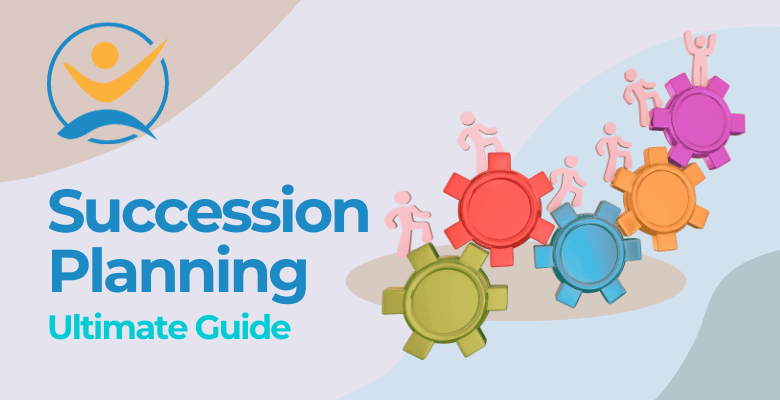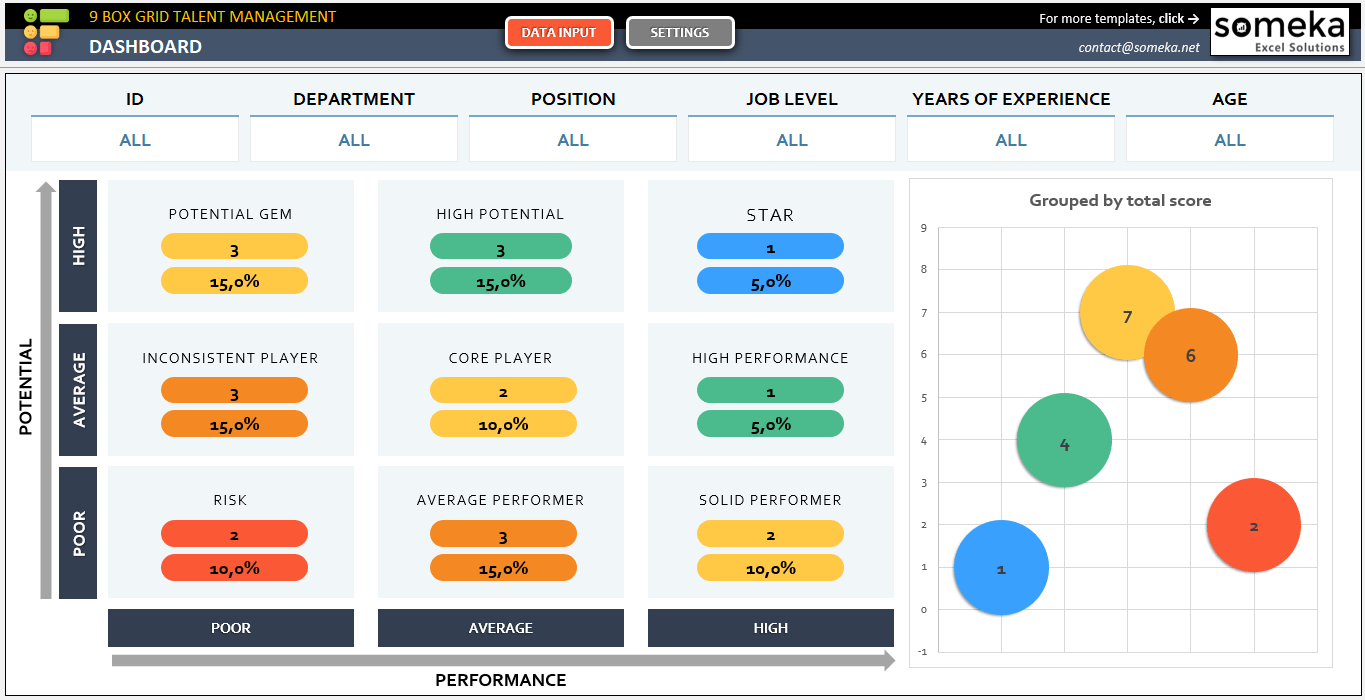

Succession planning is an important part of making sure that a business stays open and that new leaders can take over smoothly. Finding and training new leaders to take over for old ones who leave, retire, or die is part of it. This isn’t just something that big companies do; it’s also very important for small businesses, non-profits, and family-owned businesses.
Let’s discover this business concept from all aspects!
Succession planning is an important part of making sure that a business stays open and that new leaders can take over smoothly. Finding and training new leaders to take over for old ones who leave, retire, or die is part of it. This isn’t just something that big companies do; it’s also very important for small businesses, non-profits, and family-owned businesses.

Planning for the next generation of leaders has many perks. It gives workers more power by getting them ready for leadership jobs in the future. By doing this, companies can help employees advance in their careers and make sure that information and skills are consistently shared. This kind of planning not only gets a business ready for sudden employee turnover, but it also makes sure that the growth of its employees is in line with what the company will need in the future. This makes the business more resilient and able to adjust.
This detailed guide goes into great depth about succession planning, including its stages, frameworks, and the best ways to do things. We’ll look at examples from real life, talk about common problems, and answer commonly asked questions. This will give you a plan for how to do succession planning well in your organization.
We’ll now talk about the different steps of succession planning.
Succession planning is a process that has several steps. Each step is important for getting ready for future leadership changes. Let’s break these steps down:

The different steps in succession planning work together to make a circle that changes and grows with the business. The succession planning process stays fresh and useful by going over each step again and again.
Next, we’ll talk about the general process of succession planning and what it means for keeping the business going.

The succession planning process is a thorough way to make sure that a company is always ready for changes in leadership, which keeps the business running. Let’s look at the most important parts of this process:
A good succession planning method fits in well with a company’s long-term goals and plans for its workforce. It makes sure that the company is ready for the future and that there is a strong pipeline of leaders.

We will talk about leadership growth, which is an important part of succession planning, in the next section.
Leadership development is an important part of succession planning because it makes sure that people who might become leaders are ready to do their jobs well. This is how it can be added to the process:
For leadership development to go well, senior management in the company needs to be involved and committed. Their job is very important because they find people who could be leaders and give them chances to learn and grow.
The review process should include leadership development as part of the whole process. This combination makes it easier to find employees with leadership potential and make sure that their growth plans are in line with the goals of the company.
Organized talent development programs, like mentoring, coaching, leadership workshops, and on-the-job training, can help prepare high-potential workers for future leadership roles in a big way.
It is very important to make sure that there is variation in the leadership talent pool. This not only encourages inclusion, but it also brings different ideas and points of view to the leadership, which helps them come up with new ones and be flexible when business conditions change.
As part of succession planning, leadership development is about making sure that the organization has a steady stream of qualified leaders who can guide it toward its strategic goals and deal with the challenges of a business world that is always changing.
Next, we’ll talk about the concept of succession planning, including how it’s put together and how it works.

For succession planning to work, you need a well-structured system. Organizations can use this strategy to help them plan and carry out their succession plans. Let’s look at its most important parts:
Finding and developing high-potential workers by giving them the training and experience they need to become better leaders is part of the talent development step.
The framework for succession planning needs to be able to change with the company and its employees’ needs. It should also be clear and shared well with all stakeholders to make sure everyone is on the same page and supports it.

– This image is taken from the Category-Based Employee Evaluation of Someka’s 9 Box Grid Template in Excel –
Next, we’ll talk about the best ways to plan for the next leader.
Best practices must be used in succession planning for it to work and be successful. Here are some important things to keep in mind:

You can make your succession planning process much more effective by using these best practices. This will also make sure that your organization is ready for future leadership changes.
Next, we’ll talk about some of the most common problems that come up in succession planning and suggest ways to fix them.
Planning for the next generation is important, but it can be hard at times. It is very important to understand these problems and have plans for how to solve them. Here are some usual problems and how to fix them:
By properly addressing these issues, businesses can make more solid and useful succession plans that will ensure a steady flow of qualified leaders.
Next, we’ll look at case studies and examples from real life that show how succession planning can work.
Looking at examples from real life can help you learn how to plan for succession effectively. Let’s look at some well-known examples:
Apple’s planning for the change from Steve Jobs to Tim Cook is a great example of this. Apple had prepared Cook by slowly giving him more duties and public attention, even though Jobs was a famous figure. When Cook took over, he already knew a lot about the business and how it worked, which made the change go smoothly.
Companies like General Electric (GE) and IBM are known for the way they plan for the next generation of leaders. GE, for example, has a strict process for finding and training future leaders. One way they do this is by rotating people through different business units for several years. IBM works on ongoing leadership development to make sure there are a lot of qualified people for all kinds of jobs. As part of their succession plan, these businesses stress how important it is to develop leaders in a proactive and ongoing way.
These case studies show that succession planning is more than just finding a replacement. It’s also about creating an environment where people are always learning and getting ready for new jobs. It’s about making sure the organization can stay open and succeed in the long run.
Next, we’ll talk about the metrics and review methods that are used to figure out how well succession planning is working.
Setting up metrics for review is important to make sure that succession planning works. These metrics help keep an eye on the succession plan’s health and growth so that changes can be made as needed. Here are some important factors to think about:
Monitoring Turnover: Keeping an eye on turnover, especially in key positions, can tell you a lot about how stable your leadership pool is. A lot of people leaving key roles could mean that you haven’t thought about how to replace them.
Bench Strength: Figuring out the strength of the bench means figuring out how ready possible replacements are to take on important roles. This metric helps you figure out if there are enough skilled people ready to fill important jobs.
Utilization of the Pipeline: This measure checks how well the chosen candidates for succession are being trained and used. It involves keeping track of the growth of people who might become leaders and the success rate of those who are put in charge.
By looking at these measures on a regular basis, businesses can keep their succession planning on track and make sure they have a healthy succession pipeline.
Ready-Made Template To Conduct Succession Planning
9 Box Grid framework is one of the most known tools to conduct employee evaluation and succession planning. You can use Someka’s 9 Box Grid Excel Template to create Potential-Performance Matrix for the future leaders of your company.

– This image is from 9 Box Grid Succession Planning Dashboard created by Someka –
If you need an online version of this tool, you may also check 9 Box Grid Google Sheets Template, a ready-made online talent management tool with access from all devices.
Succession planning is a difficult but necessary task for businesses. It brings up many questions.
Finally, we’ll answer some questions that people often have about succession planning. Let’s answer some of the most popular questions:
The process of succession planning includes figuring out who will fill important roles in an organization, evaluating possible successors, and preparing these people to be leaders in the future. It’s a planned way to make sure that the business keeps running and that leaders are ready.
There are five main steps: identifying key positions, evaluating possible candidates, developing talent, putting succession plans into action, and reviewing and updating the succession plan on a regular basis.
Replacement Planning (looks at current needs), Talent Pool (builds a list of possible candidates), Strategic (fits with long-term business plan), and Hybrid (combines parts of other models) are the four main types.
Apple’s change from Steve Jobs to Tim Cook is a famous example. Apple got Cook ready by slowly giving him more duties and making him more visible. This made sure that the move went smoothly when he became CEO.
Succession planning is an important strategy for any business that wants to be successful and stable in the long run. Organizations can get ready for changes in the future and keep growing if they understand and use effective succession planning.
The goal of this in-depth guide on succession planning is to give business workers the information and tools they need to make their organizations’ succession plans work. This guide explains the process and gives examples from real life. It can be used as a road map to help leadership stay the same and organizations be more resilient.
Recommended Readings: